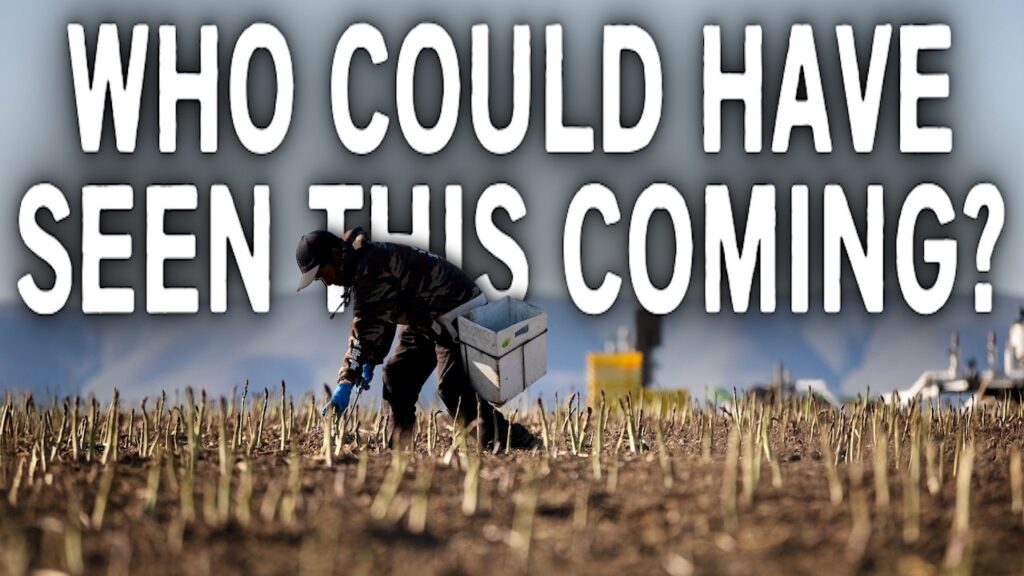America’s Farmland Crisis: Why Small Farmers Are Being Pushed Out in 2025

When I look at what’s happening to American farmers right now, it feels like we’re watching a slow-moving crisis that almost no one is talking about. The headlines might mention inflation or interest rates, but underneath that, farmers are dealing with a level of financial pressure that many of them say is impossible to survive without a bailout. And honestly, after seeing the numbers, I understand why they’re saying it.
Farm debt is at record highs, and it’s not just one issue causing the problem it’s everything at once. Trade wars, sky-high input costs, unpredictable weather patterns, and the growing consolidation of farmland are all hitting farmers simultaneously. Agricultural bankruptcies are climbing, and when I hear farmers say 25–30% of them could go out of business if nothing changes, that isn’t exaggeration. That’s reality.
Trade wars have only made things worse. About 20% of everything we grow in America gets exported, so when trade relationships break down, farmers feel it instantly. China used to be one of the biggest buyers of American soybeans, but now they’re sourcing from Brazil. This isn’t just a short-term shift this is a long-term blow to American farmers. When your key buyer walks away, it’s almost impossible to make up the revenue somewhere else.
And even the government support that farmers rely on isn’t running smoothly. Right now, over 30,000 government assistance contracts are frozen. Imagine planning a harvest, planning a year of financial decisions, and suddenly finding out that the money you depended on is paused indefinitely. New programs are supposed to start next year, but small family farms can’t wait a year. They need help now. Meanwhile, larger farms have the financial cushion to hold on until those programs kick in, which means more consolidation is almost guaranteed.
Then there’s the labor shortage. It’s getting harder and harder to find people willing to do physically demanding farm work, especially with younger generations opting for different careers. Nearly 70% of labor-intensive jobs on farms are done by contractors, and many of those workers earn below minimum wage. On top of that, strict immigration enforcement makes it harder for farmers to rely on undocumented labor, which has historically filled the gaps. Without labor, crops don’t get picked and that means more financial losses.
What makes the situation even more skewed is how wealthier farmers and investors approach land ownership. Many of them buy farmland not for the crop revenue, but for the land appreciation. And it’s working land values have risen by an average of $270 per acre. When land becomes a financial asset rather than a livelihood, smaller family farms get priced out. They simply can’t compete with investors who can afford to wait years for returns.
Government aid programs also tend to benefit the big players. Between 2019 and 2023, just 7% of farmers received 63% of government assistance. That means most small farms got very little help, even while facing the same storms, the same labor issues, and the same market losses. The incentives within these programs are often backwards, too. Some farmers are literally paid more not to grow anything which turns agriculture into land speculation instead of food production. And with investors circling, buying up distressed farmland, consolidation accelerates even more.
When I put all these pieces together, one truth becomes painfully clear: American farming is at a breaking point. If the trend continues, small and mid-sized family farms, farms that built this country will disappear, replaced by massive corporate farming operations and investment groups who treat farmland like another asset class. And while that may be good for investors, it’s devastating for rural communities, food security, and the future of American agriculture.
Whether the government steps in with another bailout or not, the landscape is changing fast. This moment in agriculture isn’t just a crisis; it’s a turning point. And what we do next will determine whether small family farms remain part of America’s future or become a piece of its past.
All writings are for educational and entertainment purposes only and does not provide investment or financial advice of any kind.





